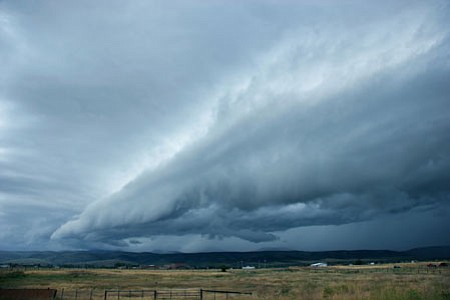Tropical Storm Nate formed Thursday morning in the southwestern Caribbean, and early forecast models show it taking aim this weekend at the central US Gulf Coast, likely as a minor hurricane, according to the National Hurricane Center.
Nate’s forecast track had shifted slightly west by midmorning Thursday, putting New Orleans — with its compromised drainage system — directly in the storm’s sights.
Anyone with Columbus Day weekend plans in Louisiana, Mississippi and Alabama should pay close attention, as a hurricane landfall in that region looks likely, CNN meteorologists said.
Nicaragua and Honduras at risk
Nate’s maximum sustained winds had increased by Thursday to 40 mph, with the storm forecast to remain close to that intensity all day as it moves inland over Nicaragua and Honduras, they said.
Life-threatening flash flooding and mudslides are possible in the Central American nations, with extreme rainfall totals of 15 to 20 inches possible in Nicaragua and up to 8 inches predicted for Honduras. A tropical storm warning was in effect from Sandy Bay Sirpi, Nicaragua, to Punta Castilla, Honduras, the hurricane center said.
TRACK TROPICAL STORM NATE
After crossing over Central America, Nate is expected to move back into the warm waters of the western Caribbean, CNN forecasters said. There, Nate could strengthen and experience an increase in forward speed, though the Yucatan Peninsula could inhibit its growth, meteorologists said.
Rapid intensification possible
Some forecast models had predicted Nate would become a much stronger hurricane and make landfall on the Florida Panhandle, but those models now have fallen more in line with predictions of a landfall along the central Gulf Coast, CNN meteorologist Brandon Miller said.
Still, many factors will play a role in Nate’s development through the weekend, he said.
“How much Nate is able to strengthen once it hits those warm waters depends a lot on how intact the center of the storm can maintain as it traverses land,” Miller said. “If it gets ragged, it will take some time to reform over the ocean, and that will mean less time to gain in intensity.
“But if it manages to stay together while over Central America, it will be able to take advantage of those warm waters and quickly strengthen, maybe even undergo ‘rapid intensification,'” he said.
Rapid intensification occurs when a storm’s maximum sustained winds increase at least 35 mph in 24 hours or less. Hurricanes Harvey, Irma, Jose, and Maria all underwent the phenomenon on their way to becoming major hurricanes earlier this season.
